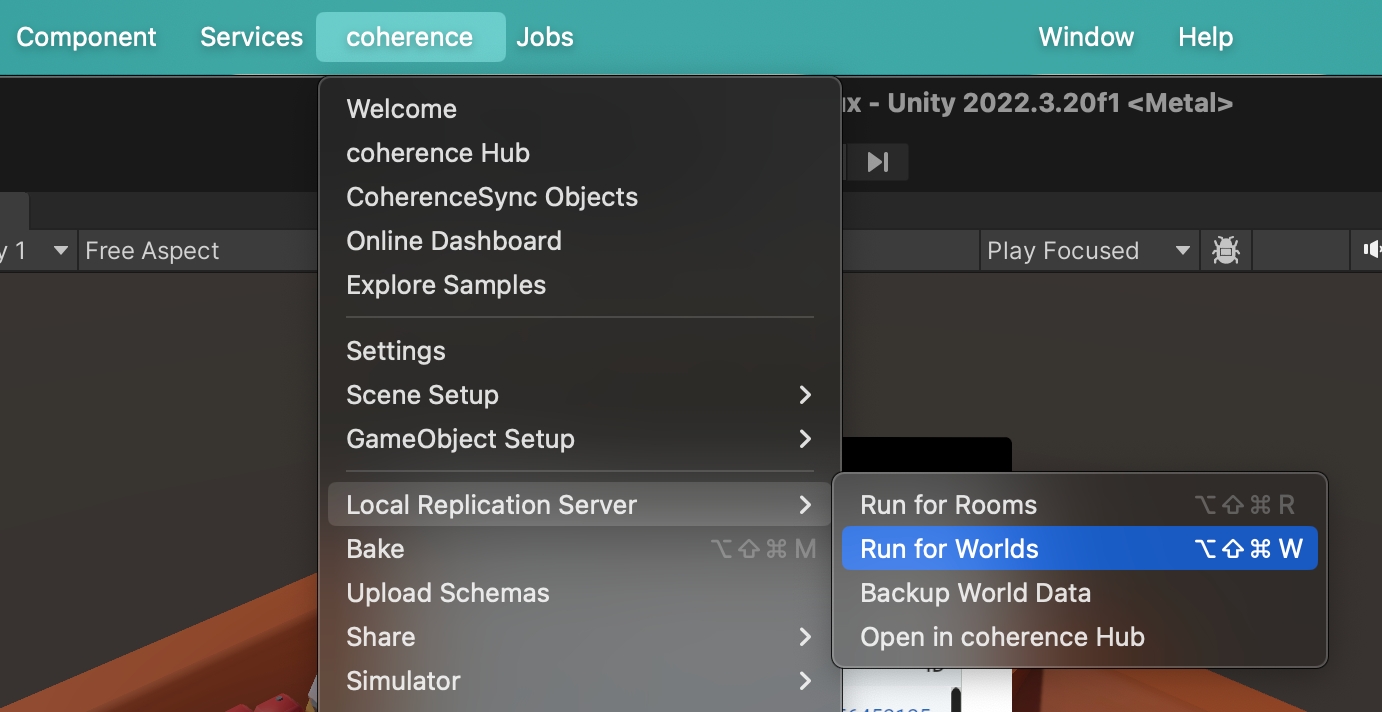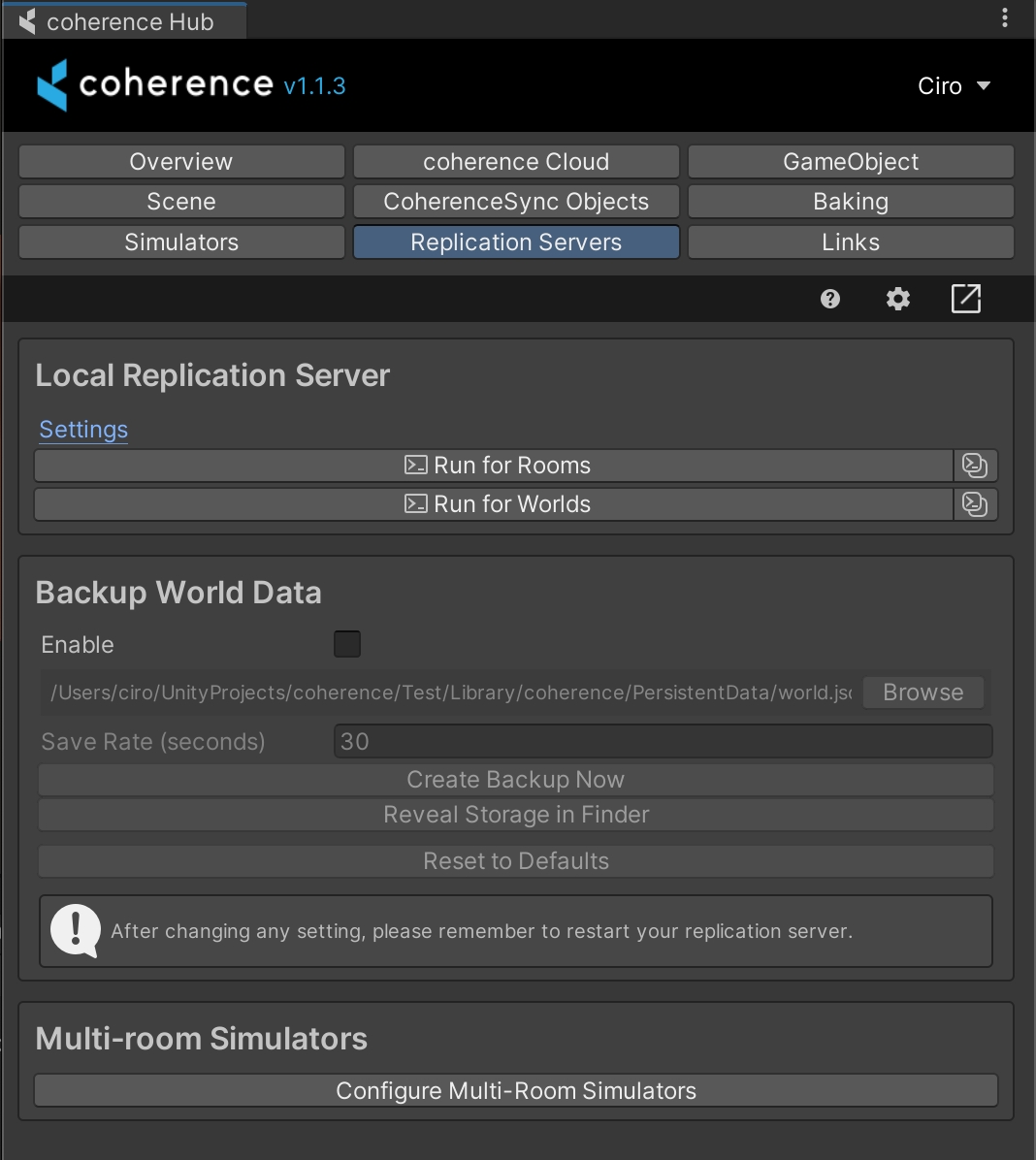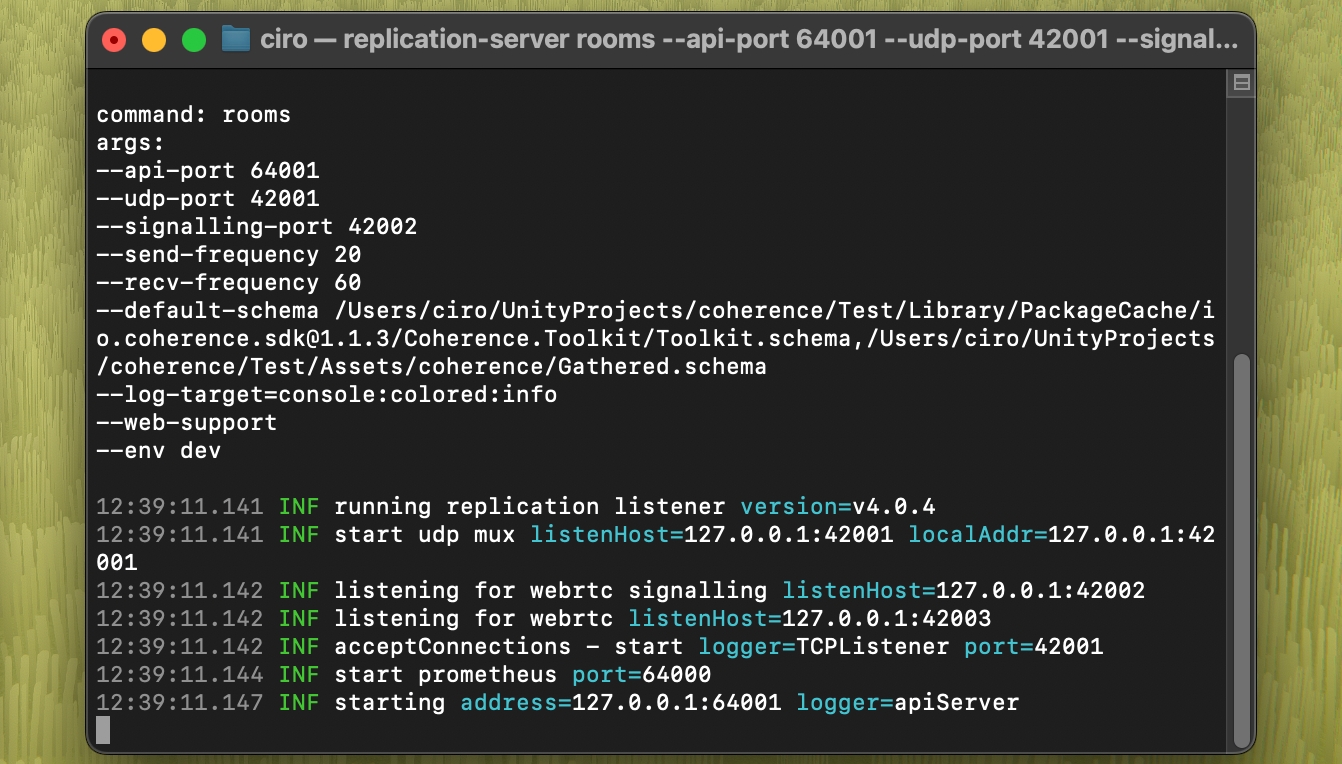Local Development
Now we can build the project and try out network replication locally. This example will show you how to launch a local Replication Server and connect multiple instances of the game to it.
Running a Replication Server locally
You can run a local Replication Server from:
coherence > Local Replication Server > Run for Rooms / Run for Worlds

As with most features found in the menu, you can find local Replication Server functionality in the coherence Hub as well.
Open the Replication Servers tab and run a Room or a World Replication Server:

Regardless of how you launch it, a new terminal window will open and display the running Replication Server:

Testing the Game
Was this helpful?

